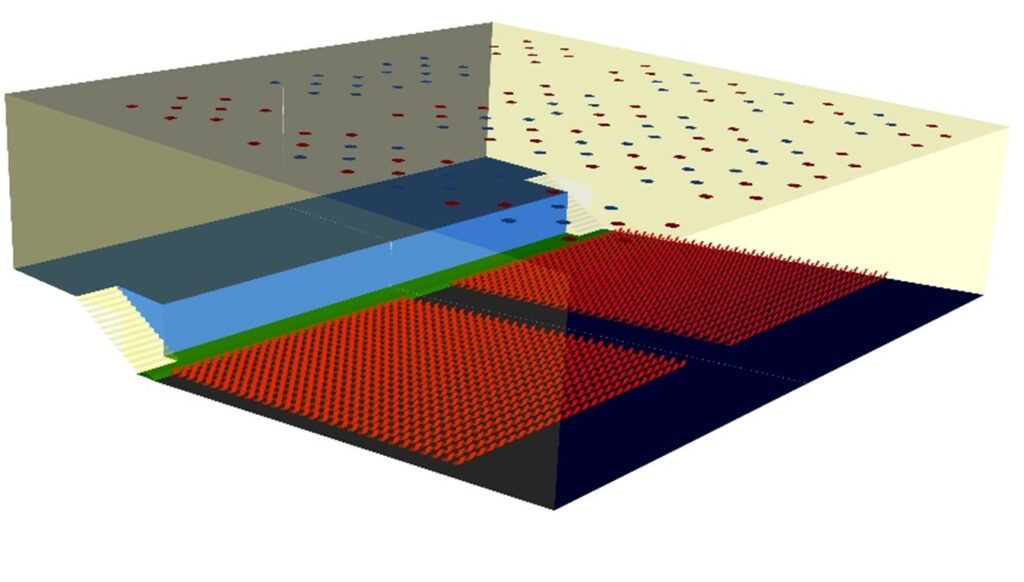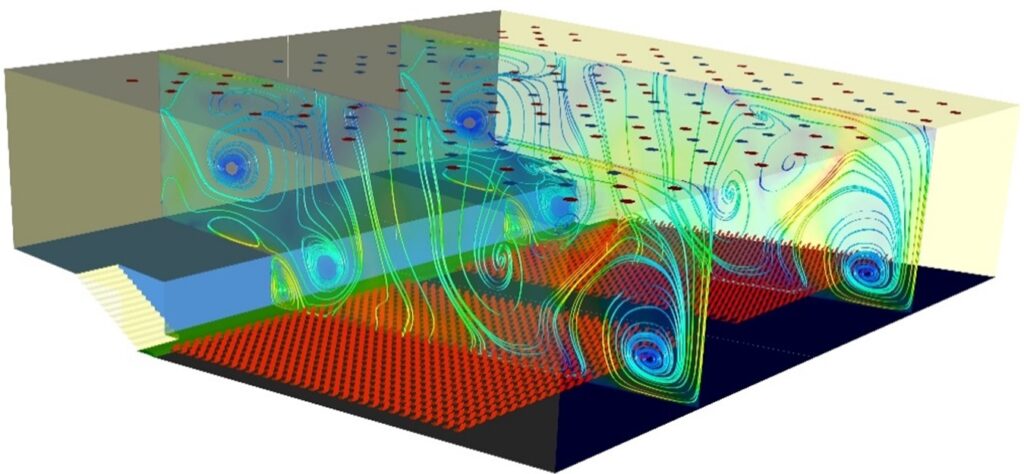INTRODUCTION
Heating, ventilation and air-conditioning account for 30% of energy consumption in commercial buildings in India. Consequently almost all business and house-hold has the potential to realize significant savings by improving HVAC systems.
Computational Fluid Dynamics (CFD) plays an important role in design of modifications in the existing auditorium HVAC systems.
OUTLINE OF WORK
Computational Fluid Dynamics is the most sophisticated air flow modelling method, can simultaneously predict airflow, heat transfer and contaminant transportation inside large theatres and halls.
The theatre is divided into following major spaces – balcony, main seating area and stalls. The full system layout has been modelled with the given dimensions of the auditorium. The air handling system and spill exhaust fans of the system are modelled. The system layouts make use of the symmetry about the building axis line, with each being essentially the mirror of the other. The air entering through the over-head diffusers are at 20˚C and at a rate 8 m/s. Return air to the air handling system is via the over-head diffusers located at certain points of interest.

CFD FINDINGS FOR THE PROPOSED VENTILATION SYSTEM
In this study the theatre with its full capacity of around 600 persons and other electronic equipments are computationally modelled. The temperature inside the auditorium before the cooling system is switched on is at 33˚C. With the proposed system of layout, the air-conditioning is switched on for 180 minutes and the flow distribution and thermal comfort on the occupants is studied and necessary design modifications is made to the HVAC system.
The most appropriate way to get relevant information is to approach a trusted CFD Consulting Services or Structural Analysis Services provider.
From the CFD simulation results the existing system is reconfigured for the air distribution system and spill air exhaust fans for the balcony and main seating area. The findings provided insight of enhanced flow distribution throughout the auditorium and increased thermal comfort for the occupants.



The findings also provided the heat load calculations and the amount of BTU/hr (British thermal unit) required to provide the best thermal comfort inside the auditorium.
The CFD analysis indicated that the proposed alterations achieved the following
- Delivery of air from the diffusers to the front balcony and main seating area appears to improve.
- Circulation patterns in void space appears to be more moderate and hence air dumping is less.
- Local temperature fluctuations are very moderate and even enhanced thermal comfort
You can develop new routes by joining forces with a leading Stress Analysis Services Provider or Product Design Companies with a good reputation.

